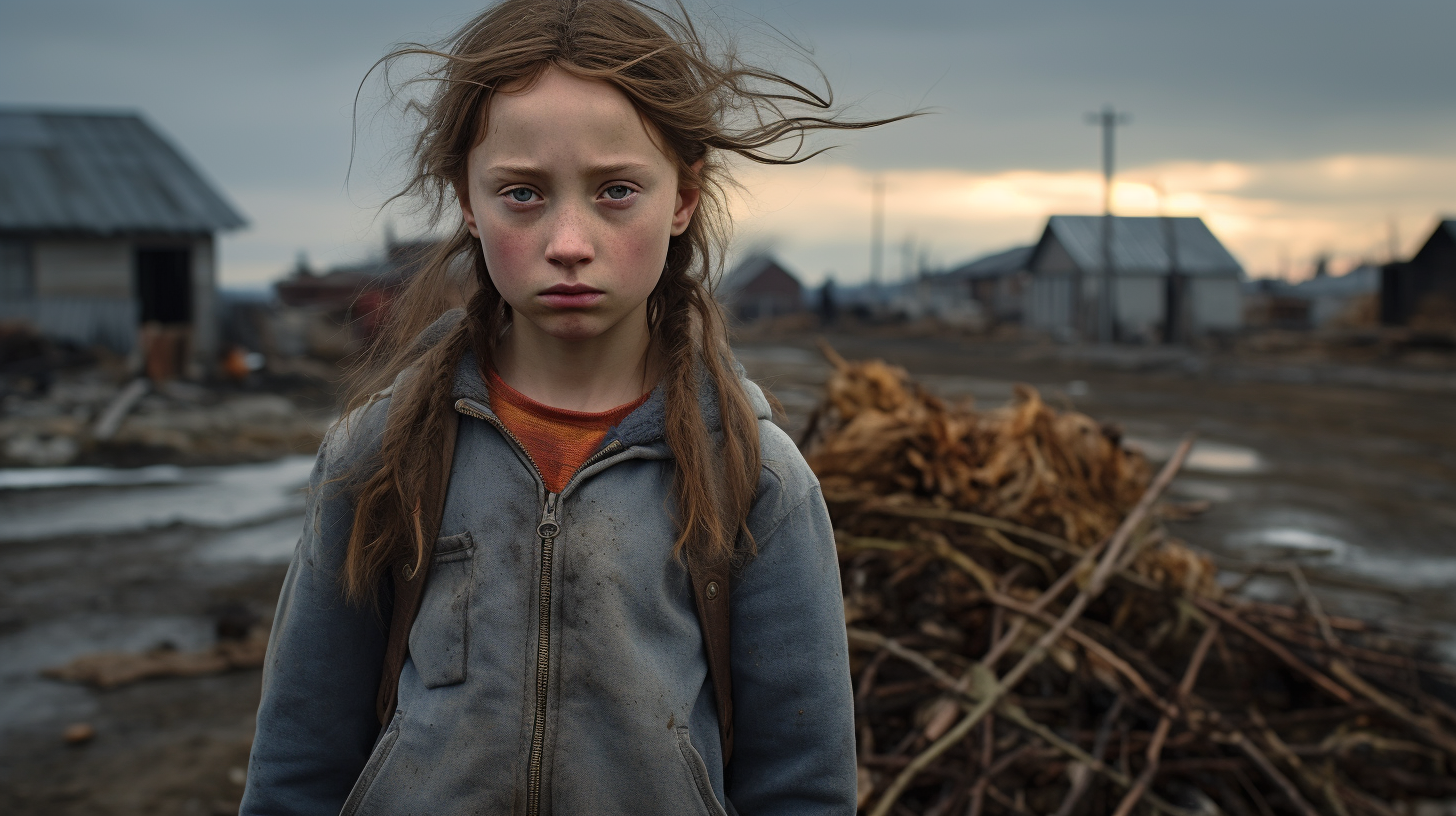In lands once swathed in shades of emerald and gold, now lie the muted browns of barrenness. Fields that once offered bountiful harvests stand idle, their yields dwindling to the sobs of a mother earth weeping for rejuvenation. The ‘Last Harvests of Humanity’ unearth the devastating final chapters of the world’s food chronicle, waiting in the wings with an unwavering finality.
As you wander past rows of withered vines and parched earth that once held the seeds of life, a profound stillness fills the air—a testament to an epoch where the horn of plenty echoes empty. Skeletons of trees stand as morbid monuments to a time when the lush rustling of leaves was not just a memory encapsulated in tales of melancholy.
The ravages of time and environmental neglect have laid bare the consequences we were forewarned about – but to which we turned a blind eye. The spectre of famished populaces scrounging for sustenance in the ruins of supermarkets speaks to a future already penned in the annals of despondency. Dr. Aleksei Dryden’s prophetic words loom larger than ever, as he had cautioned against such stark realities, and now, we live them.
Who would have thought that the earth’s verdant seas of crops would capitulate to such an expanse of desolation? The whispers of biodiversity that could have saved us are now just echoes among the tattered remnants of our ecosystems. The stories of last harvests are not just accounts of failing crops, but epitaphs of humanity’s broken ties with nature.
What do these last harvests tell us? They narrate tales of soil so salinated and abused that regeneration seems akin to mythmaking. They speak of oceans gagged by our excesses—once teeming with life, now tombs of the aquatic. The very essence of fauna imperceptibly erased, as the bees—those tiny harbingers of life—no longer dance amidst the blooms.
In our incessant pursuit of progress, we razed the ancient forests to ash, forgetting that they were the lungs through which our planet breathed. Now, we gasp for air in cities chocking under a perennial grey shroud. The pretended marvels of technological solutions proved illusory. Geoengineering, carbon capture—all deus ex machina fading into the night as humanity confronts the consequences of its own creation. The artifice of machinery could not replicate the symphony of nature, and thus we stand, silent spectators to the closing act of an ecological opera.
The accompanying societal disruptions weave their own tapestry of dystopia. Communities cleave asunder, migration surges as desolation spreads its roots. The last harvests not only diminish our physical sustenance, but they erode the social fabric defining our existence, fostering divisions and stoking the flames of conflict over the scraps remaining.
All over, market places that once celebrated the cornucopia of our lands, now muse upon the silence. Empty stalls stand as grim reminders of abundance lost. Our culture, once so richly interwoven with the food we shared, frays at the edges—in tatters from the impact of our blighted choices.
And yet, as we face the last harvests, the question beckons reflectively from the void—where do we go from here? Traditionally, tales of dystopia were interlaced with threads of hope, but in the pages of our story, such salvation fades into the obsidian of night. History will remember us not for the civilization we built, but for the anarchy of nature we unleashed.
In our dystopian present, we find a bleak poetry—the last sonnets of humanity etched into the dying earth. Our legacy. The last harvests they stand, hauntingly beautiful in their tragedy, lasting memorials of a species that dreamt of the stars but forged its fate in the dust.
